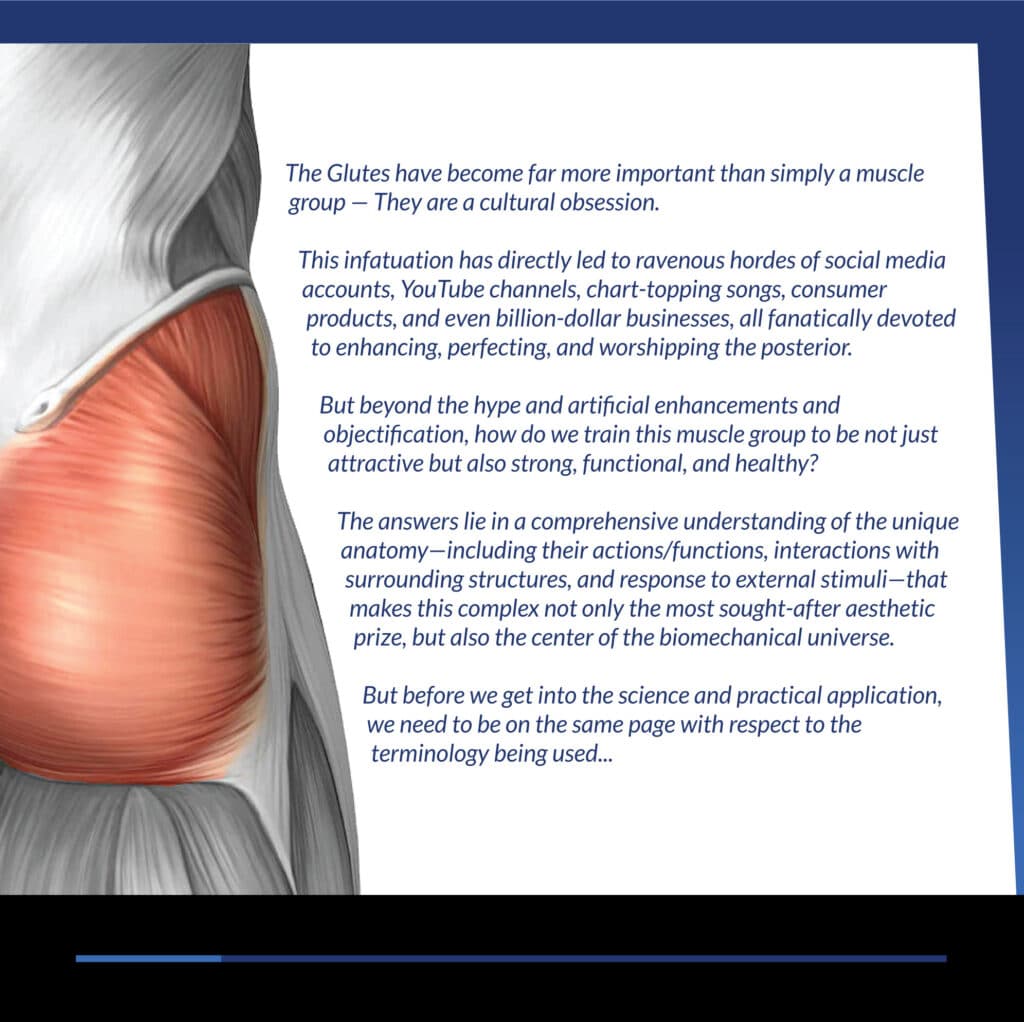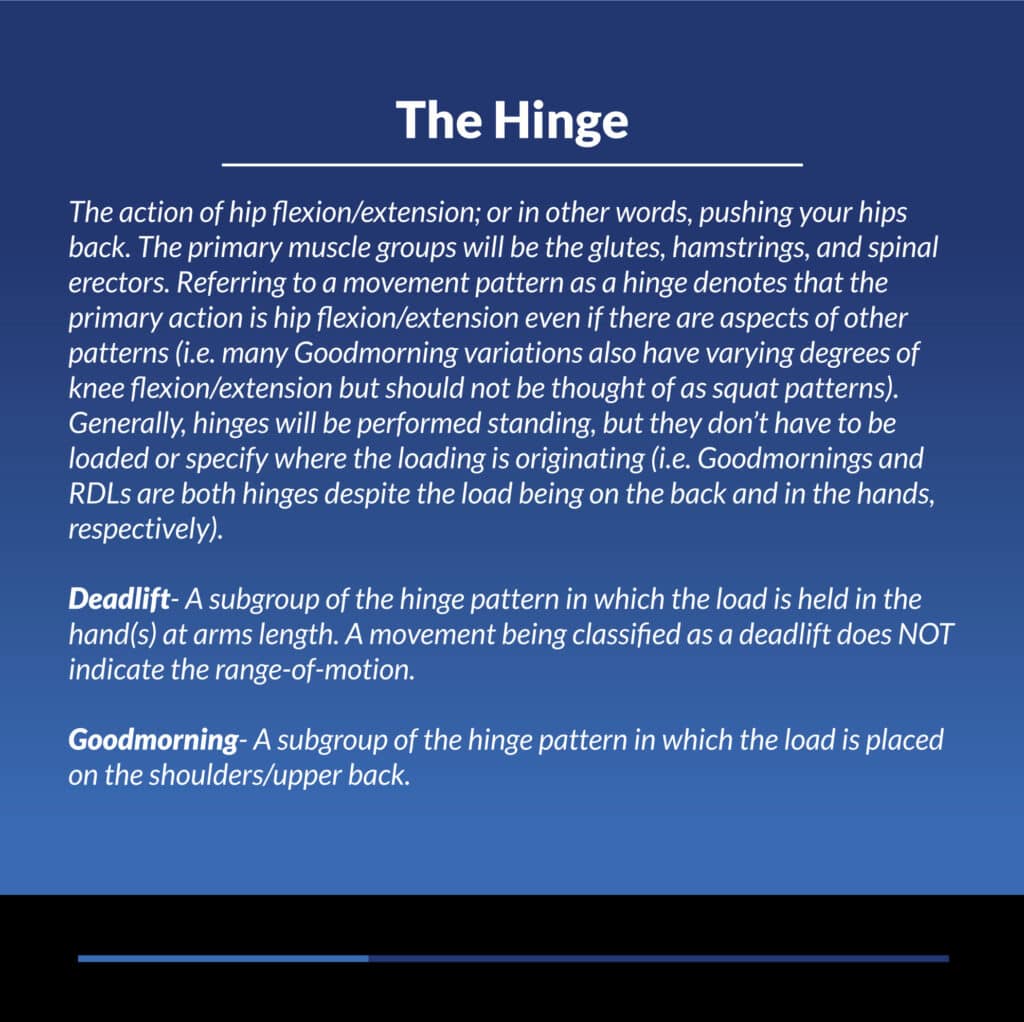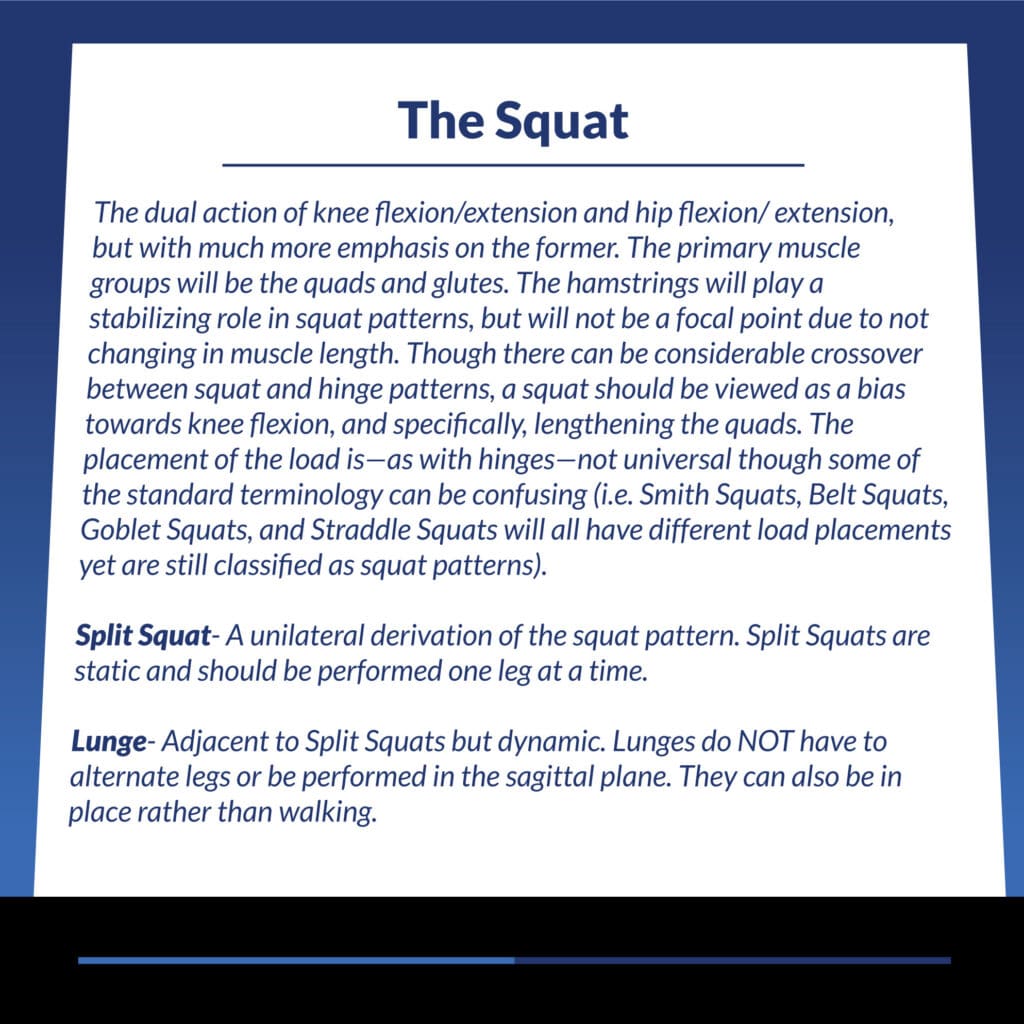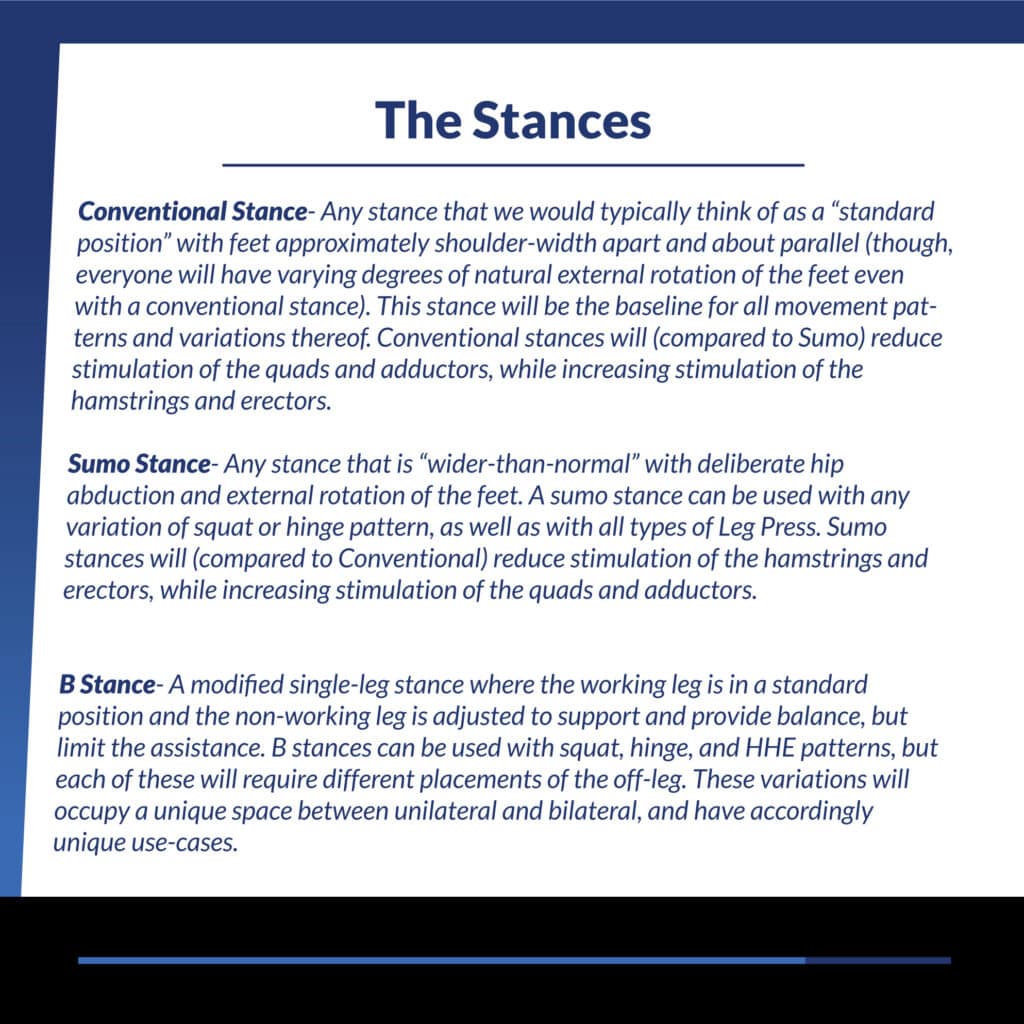Hinge– The action of hip flexion/extension; or in other words, pushing your hips back. The primary muscle groups will be the glutes, hamstrings, and spinal erectors. Referring to a movement pattern as a hinge denotes that the primary action is hip flexion/extension even if there are aspects of other patterns (i.e. many Goodmorning variations also have varying degrees of knee flexion/extension but should not be thought of as squat patterns). Generally, hinges will be performed standing, but they don’t have to be loaded or specify where the loading is originating (i.e. Goodmornings and RDLs are both hinges despite the load being on the back and in the hands, respectively).
Deadlift– A subgroup of the hinge pattern in which the load is held in the hand(s) at arms length. A movement being classified as a deadlift does NOT indicate the range-of-motion.
Goodmorning– A subgroup of the hinge pattern in which the load is placed on the shoulders/upper back.
Squat– The dual action of knee flexion/extension and hip flexion/extension, but with much more emphasis on the former. The primary muscle groups will be the quads and glutes. The hamstrings will play a stabilizing role in squat patterns, but will not be a focal point due to not changing in muscle length. Though there can be considerable crossover between squat and hinge patterns, a squat should be viewed as a bias towards knee flexion, and specifically, lengthening the quads. The placement of the load is—as with hinges—not universal though some of the standard terminology can be confusing (i.e. Smith Squats, Belt Squats, Goblet Squats, and Straddle Squats will all have different load placements yet are still classified as squat patterns).
Split Squat– A unilateral derivation of the squat pattern. Split Squats are static and should be performed one leg at a time.
Lunge– Adjacent to Split Squats but dynamic. Lunges do NOT have to alternate legs or be performed in the sagittal plane. They can also be in place rather than walking.
Horizontal Hip Extension– The action of hip flexion/extension that has a ventral-to-dorsal orthogonal load vector to gravity (i.e. the primary direction of loading is a ~90º angle to gravity that points from the front to the back of the body). The primary muscle group will be the glutes, and HHE will be the only pattern that provides significant tension to the glutes in full hip extension. The quads, hamstrings, erectors, and adductors will all play stabilizing roles with HHE. Due to the mechanics and force vector, the loading has to be either on the hips (e.g. Hip Thrusts) or at hip level (e.g. Cable Pullthroughs).
Hip Thrust– A subgroup of the HHE pattern. Though there is considerable back-and-forth within the fitness industry over what exactly classifies a Hip Thrust, we will refer to any HHE variation that has shoulders elevated off the floor—either above or at the level of the feet—as a Hip Thrust, regardless of the range-of-motion.
Glute Bridge– A subgroup of the HHE pattern. As with Hip Thrusts, people like to argue semantics for no reason. So for our purposes, we will refer to any HHE variation that has the feet above the level of the shoulders—on the floor or otherwise—as a Glute Bridge, regardless of the range-of-motion.
Conventional Stance– Any stance that we would typically think of as a “standard position” with feet approximately shoulder-width apart and about parallel (though, everyone will have varying degrees of natural external rotation of the feet even with a conventional stance). This stance will be the baseline for all movement patterns and variations thereof. Conventional stances will (compared to Sumo) reduce stimulation of the quads and adductors, while increasing stimulation of the hamstrings and erectors.
Sumo Stance– Any stance that is “wider-than-normal” with deliberate hip abduction and external rotation of the feet. A sumo stance can be used with any variation of squat or hinge pattern, as well as with all types of Leg Press. Sumo stances will (compared to Conventional) reduce stimulation of the hamstrings and erectors, while increasing stimulation of the quads and adductors.
B Stance– A modified single-leg stance where the working leg is in a standard position and the non-working leg is adjusted to support and provide balance, but limit the assistance. B stances can be used with squat, hinge, and HHE patterns, but each of these will require different placements of the off-leg. These variations will occupy a unique space between unilateral and bilateral, and have accordingly unique use-cases.






